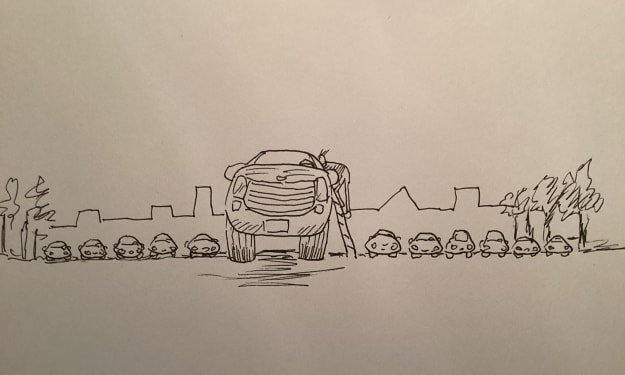
Geology
A wealth of knowledge about Mars has been acquired through the analysis of data collected by telescopes, spacecraft, and meteorites originating from Mars. The majority of these meteorites are basalt, a type of igneous rock. The oldest known Mars meteorite, ALH84001, dates back 4.1 billion years and belongs to a rock category called orthopyroxenite. This meteorite also contains minerals that formed through interactions between the original material and water approximately 3.9 billion years ago. The oldest minerals from Mars are zircons, which are 4.4 billion years old and were discovered in a 2.1 billion-year-old meteorite (NWA 7034) found in Northwest. These zircons and their counterparts resemble the ancient Jack Hills zircons found on Earth. On the other hand, the youngest rocks from Mars are basaltic meteorites known as shergottites, with the most recent ones being around 180 million years old.
Rocks and Minerals
Both Mars and Martian meteorites exhibit a diverse range of rock types, including igneous basalt, sedimentary sandstone, mudstone, impactites, and evaporites. These rocks consist of various minerals such as olivine, pyroxene, amphiboles, feldspar, carbonates, sulfates (jarosite, gypsum), silica, phyllosilicates, phosphates, and iron oxides (hematite).
Surface Features
Mars also showcases a variety of recognizable landforms, such as wind-formed dunes. Additionally, there are different types of sedimentary deposits, known as Transverse Aeolian Ridges (TARs) and Polar Layered Deposits (PLDs). One particularly intriguing feature on Mars is the Recurring Slope Lineae (RSL), which appear and disappear in gullies and crater walls as the seasons and temperatures change. One hypothesis suggests that these dark streaks may be formed by highly saline liquid water seeping to the surface and rapidly evaporating.
Scientists often utilize certain locations on Earth as analogs to better understand the environments present on Mars. Examples of such places include Iceland, where the basalt rocks share similarities with those on Mars and volcanic eruptions occur beneath glaciers. Antarctica is also used as an analog due to its extreme cold, resembling the conditions on Mars.
Mars
Mars, the fourth planet in our Solar System, holds the distinction of being the farthest terrestrial planet from the Sun. The distinct reddish hue of its surface is attributed to the presence of finely grained iron(III) oxide dust in the soil, earning it the moniker "the Red Planet". Mars has a radius of 3,389.5 km (2,106 mi), making it the second smallest planet in our Solar System. Notably, the Martian dichotomy is evident on its surface, with the northern hemisphere generally exhibiting flatter and lower terrain compared to the southern hemisphere. Additionally, Mars possesses a thin atmosphere primarily composed of carbon dioxide, along with two irregularly shaped natural satellites named Phobos and Deimos.
Similar to other planets in our Solar System, Mars formed approximately 4.5 billion years ago. During the Noachian period, spanning from around 4.1 to 3.7 billion years ago, Mars's surface underwent meteor impacts, valley formation, erosion, and potentially harbored water oceans. The subsequent Hesperian period, occurring between 3.7 and 3.2–2 billion years ago, witnessed extensive volcanic activity and flooding that carved vast outflow channels. The current Amazonian period is characterized by the influence of wind on geological processes. Whether life has ever existed on Mars remains unknown.
Mars stands out as one of the brightest celestial objects visible in Earth's sky, making it a popular subject for observation using telescopes. Since the latter half of the 20th century, Mars has been the subject of exploration by various missions and spacecraft.
Scientists have proposed a theory regarding the formation of Mars during the early stages of the Solar System. They believe that Mars was created through a random process of accumulating material from the protoplanetary disk that surrounded the Sun. As a result of its position in the Solar System, Mars possesses distinct chemical characteristics. Elements with lower boiling points, such as chlorine, phosphorus, and sulfur, are more abundant on Mars compared to Earth. This is likely due to the influence of the young Sun's energetic solar wind, which pushed these elements outward.
After the planets formed, they experienced a period known as the "Late Heavy Bombardment." Approximately 60% of Mars' surface bears evidence of impacts from this era, while the remaining surface is likely marked by massive impact basins caused by these events. In the Northern Hemisphere of Mars, there is proof of an enormous impact basin spanning an area of 10,600 by 8,500 kilometers (6,600 by 5,300 miles). This basin is roughly four times the size of the Moon's South Pole – Aitken basin, which is the largest impact basin discovered so far. According to this theory, Mars was struck by a body similar in size to Pluto around four billion years ago. This event, believed to be responsible for the Martian hemispheric dichotomy, resulted in the formation of the smooth Borealis basin that covers 40% of the planet.
A study conducted in 2023 provides evidence, based on the orbital inclination of Deimos (one of Mars' moons), suggesting that Mars may have had a ring system approximately 3.5 to 4 billion years ago. This ring system could have originated from a moon that was 20 times more massive than Phobos, which orbited Mars billions of years ago. Phobos may be a remnant of that ring.
The geological history of Mars can be divided into several periods, but three primary periods stand out:
1. Noachian period: This period corresponds to the formation of Mars' oldest existing surfaces, which occurred between 4.5 and 3.5 billion years ago. The Noachian age surfaces bear numerous large impact craters. The Tharsis bulge, a volcanic upland, is believed to have formed during this period, along with extensive flooding.
About the Creator
Najla
Let me know which kind of stories you are interested in.
Enjoyed the story? Support the Creator.
Subscribe for free to receive all their stories in your feed. You could also pledge your support or give them a one-off tip, letting them know you appreciate their work.






Comments
There are no comments for this story
Be the first to respond and start the conversation.